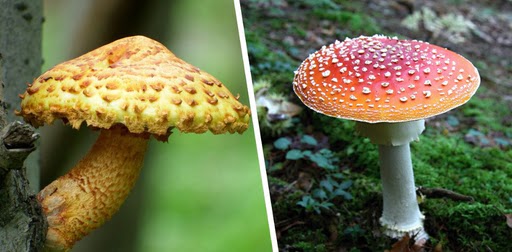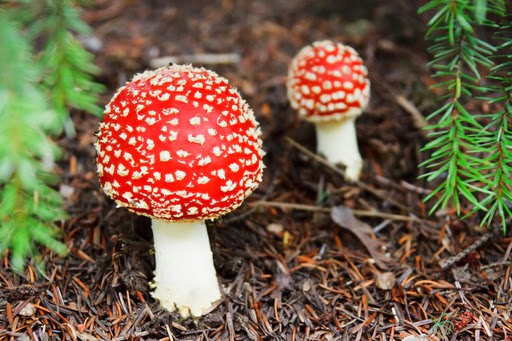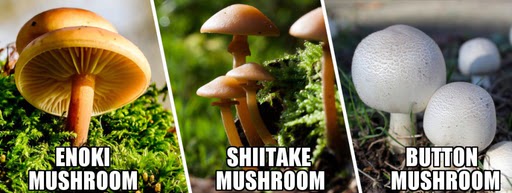Based on dictionary definitions, mushrooms are fungi with gills (without mentioning edibility), while toadstools are fungi that are believed to be inedible or toxic.
In ancient folk tales, the term ‘toadstool’ was used to describe poisonous mushrooms with large caps on which toads were believed to commonly rest. Since then, the distinction between mushrooms and toadstools has become somewhat unclear.
Even Wikipedia groups them together and defines mushrooms as synonymous with toadstools by placing it next to the former in brackets, as in mushrooms (or toadstools) are fleshy, spore-bearing, fruiting fungi. Mushrooms are known as the meat of the vegetable world. They are used in the preparation of pizzas, casseroles, soups, noodles, rice, and many other common dishes. Who would have thought that a fungus could taste so delicious!
 (Photo Credit: Public Domain Pictures & Maxpixels)
(Photo Credit: Public Domain Pictures & Maxpixels)
Mushroom And Toadstool Are Unscientific Labels
Both names are therefore simply unscientific labels used to define different types of fungi. However, there is a general agreement that mushrooms are white-capped species that grow in fields and are safe and edible, while toadstools are inedible or poisonous species of fungi that are identical to mushrooms and their consumption can cause minor gastrointestinal infections, psychological issues such as confusion and anxiety, or even death. Even dictionaries do not provide clear and distinct definitions. The Oxford Dictionary defines them as:
Mushroom: A fungal growth that typically has a domed cap on a stalk, with gills on the underside of the cap.
Toadstool: The spore-bearing fruiting body of a fungus, typically in the form of a rounded cap on a stalk, especially one that is believed to be inedible or poisonous.
 (Photo Credit: Public Domain Pictures)
(Photo Credit: Public Domain Pictures)
Based on these dictionary definitions, one can only infer that mushrooms are gilled fungi (with no mention of edibility), while toadstools are fungi believed to be inedible or toxic. However, due to the striking resemblance in their appearance, any forager walking through a forest or hiking up a dense hill may mistake a toadstool for a mushroom and end up either hallucinating vivid unicorns or ending up in a hospital with liver or kidney failure.
This is a terrifying thought considering the countless species of fungi out there and our limited knowledge about any of them. So, how can we identify the harmless ones?
How Do We Classify Mushrooms And Toadstools?
Poisonous mushrooms were associated with toads because toads were known to carry toxins and diseases. This is why fungi are one of the least understood species on the planet. The aversion is largely cultural because, for centuries, fungi were believed to be the work of witches and evil spirits, as they were responsible for spreading various infections and causing deaths.
A person who gathers food from the wild, even if they are very hungry, should not rely on unreliable information to pick mushrooms for a meal. It is important to be cautious, but classifying mushrooms can be challenging. The term “mushroom” is used loosely and does not cover every species of mushroom – some have pores on the underside, while others have spines, and some do not have gills. The term is more like a category of visible fungal fruiting bodies, rather than a category based on precise taxonomic knowledge.

There is no single characteristic that can be used to identify all toxic or edible mushrooms. Visual or tactile identification requires careful attention to detail. This means considering a variety of characteristics, not just the shape of a species. One must examine its color, size, pores, gills, spore color, flesh color, habitat, vulva, stem color, roots, smell, latex, and many other features before consuming a group of mushrooms.
Alternatively, we could rely on molecular data to determine with certainty whether mushrooms are edible or toxic. Molecular classification is the best way to distinguish edible mushrooms from poisonous ones. However, I have not yet seen a forager who carries expensive microscopes and scalpels during their hikes. Modern classification is based on molecular differences, but the old and inaccurate methods still dominate.
